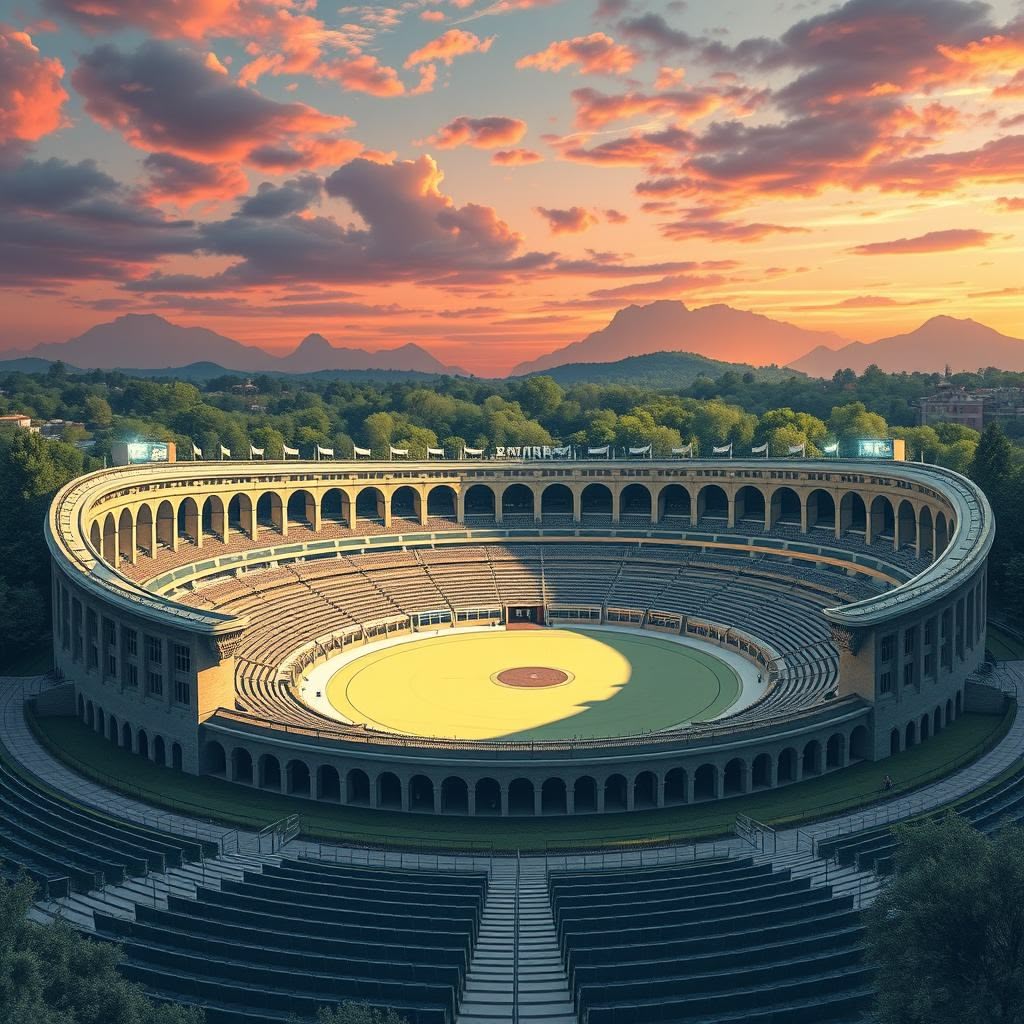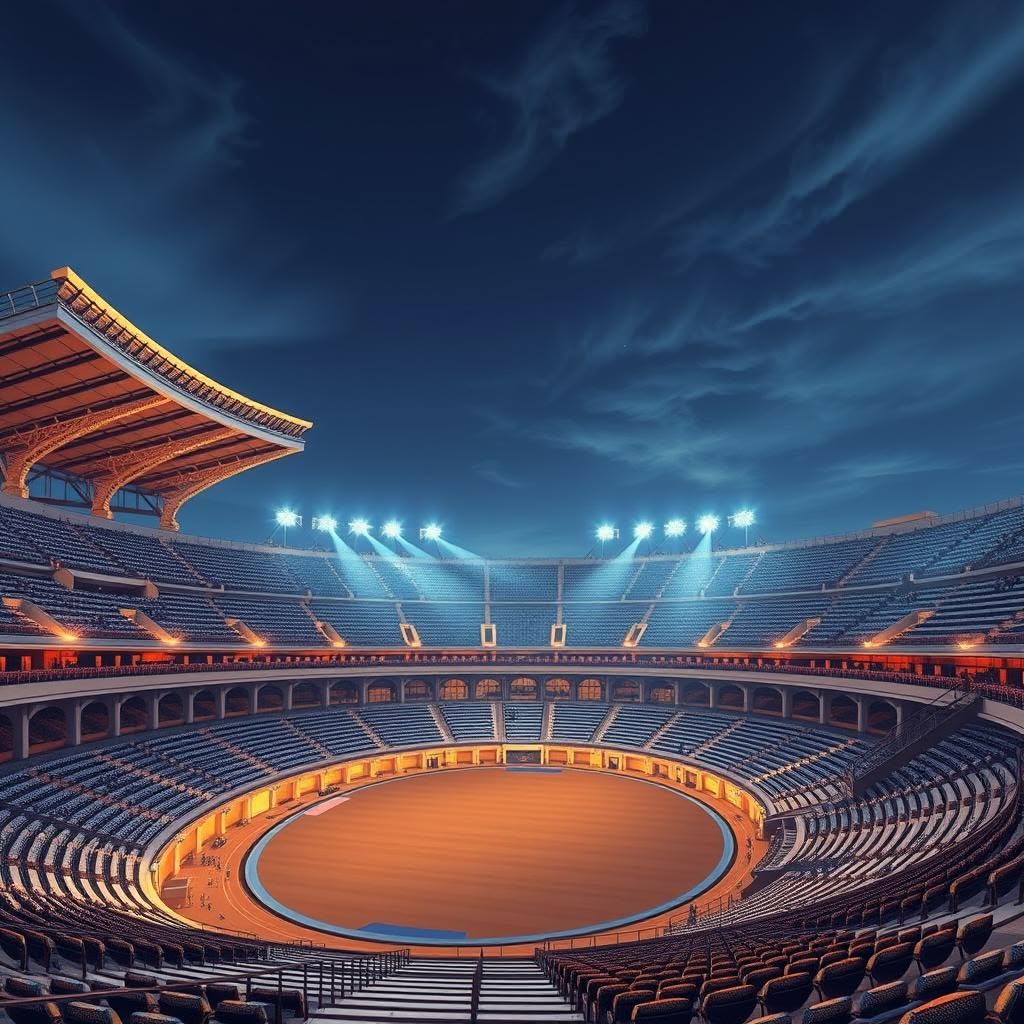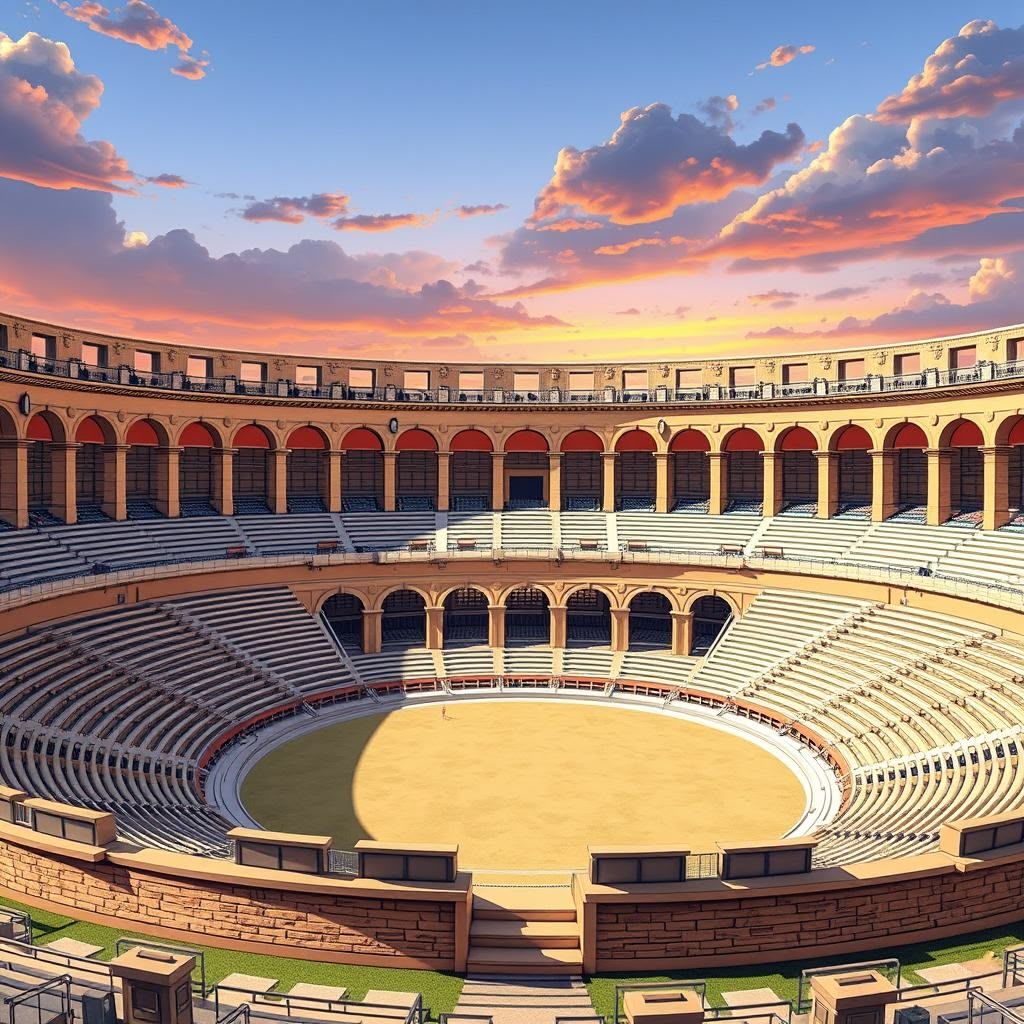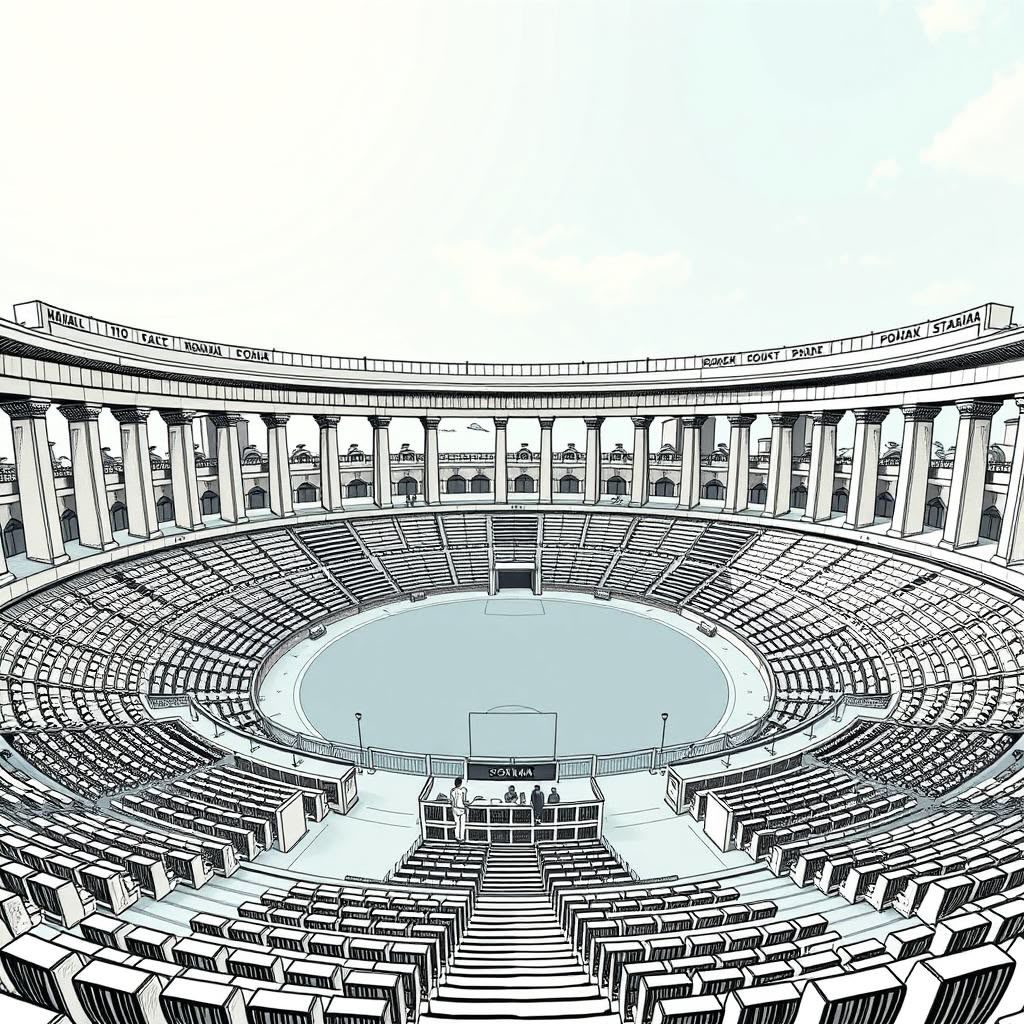Roman amphitheaters are amazing examples of ancient engineering. These huge structures were built to hold large public events, showing off the Romans’ advanced knowledge of architecture and managing crowds. Their oval shape allowed everyone to see well from their seats, and the tiered seating arrangements made sure thousands of spectators could sit comfortably. The extensive use of arches not only made these venues strong but also added to their beauty.
The impact of Roman amphitheaters on modern stadium design can be seen in many sports arenas today. The principles behind their design—especially the oval shape, tiered seating, and strong arch construction—are now basic features in building stadiums. These elements create an exciting experience for spectators while also being practical and long-lasting.
But the architectural skill shown in these amphitheaters is just one part of Roman engineering. A wider look at 10 incredible Roman engineering feats that changed the world shows a legacy that includes the Roman roads, which were crucial for their vast empire, enabling trade and military movement.
Additionally, understanding the social context in which these amphitheaters existed adds more meaning to their importance. For example, studying the legal status of Roman women gives us insight into gender dynamics during this time, while looking into the lives of plebeians reveals the experiences of Rome’s common people who made up most of the audience in such grand venues.
In short, Roman amphitheaters still have an impact on modern stadium design, connecting ancient creativity with today’s architectural advancements.

The Colosseum and its Role in Roman Society
The Colosseum is a symbol of ancient Rome’s greatness, showcasing its impressive engineering and architecture. This famous amphitheater was the center of public entertainment, hosting various events that thrilled the Roman people.
Description of the Colosseum
The Colosseum, also known as the Flavian Amphitheatre, was a massive structure built during the reign of the Flavian emperors in the heart of Rome. Its oval shape and towering walls reached new heights in architectural design.
Hosting Gladiatorial Contests and Theatrical Performances
Inside the Colosseum, gladiators fought fiercely, exotic animals battled each other, and chariots raced while crowds erupted in cheers. These events were more than just entertainment; they had a significant impact on social dynamics and political power. You can read more about this here. Additionally, theatrical performances brought mythical stories to life with elaborate sets and captivating acting.
Symbol of Imperial Power and Civic Pride
The Colosseum represented more than just entertainment; it embodied the strength of the Roman Empire and its rulers. It stood as a physical representation of imperial authority, showcasing Rome’s wealth and creativity. Furthermore, it instilled a sense of pride in Roman citizens, fostering unity and identity among the people.
The significance of the Colosseum went beyond being a mere spectacle; it reflected the fundamental values and ambitions of Roman society. This society valued not only bravery in gladiatorial fights or magnificence in architecture but also established [legal principles] that would influence modern legal systems. The legacy of Ancient Rome continues to be a vital part of Western civilization.
In addition to these aspects, it’s interesting to note how these events and structures have been interpreted over time through various lenses including literature, art, and historical analysis. For an extensive exploration into this subject matter, you can access this academic paper which delves into these interpretations further.

Architectural Features That Shaped Viewer Experience
The design of Roman amphitheaters was carefully planned to enhance the experience of spectators. Here are some key architectural features that contributed to this:
1. Elliptical Shape for Optimal Viewing
The elliptical shape of Roman amphitheaters was a deliberate architectural choice that revolutionized the viewing experience for spectators. This design optimized sightlines and acoustics, ensuring that every viewer had an unobstructed view of the events unfolding in the arena. The curvature of the structure allowed for a more intimate connection between the audience and the performers, enhancing the overall immersive experience.
2. Tiered Seating Arrangement for Maximum Capacity
The tiered seating arrangement in Roman amphitheaters was not only practical but also ingenious. By staggering the seats in concentric rings around the arena, large numbers of people could be accommodated without compromising visibility. This layout also created a sense of hierarchy among the audience, with the most privileged spectators seated closest to the action. Additionally, the tiered seating design facilitated efficient crowd management and ensured smooth traffic flow within the amphitheater.
3. Arches for Structural Support and Aesthetic Appeal
Arches were a defining feature of Roman architecture, and their incorporation into amphitheater design served both structural and aesthetic purposes. Arches provided crucial support for the massive weight of the seating tiers above, allowing for larger venues with fewer internal columns obstructing views. Moreover, arches added a grandeur to the facades of these structures, symbolizing strength and endurance.
4. Roman Concrete for Durability and Intricate Design
Roman concrete, a groundbreaking construction material composed of lime mortar, volcanic sand, water, and stones, played a pivotal role in creating durable yet visually striking amphitheaters. This innovative building material allowed architects to construct massive structures with intricate detailing, showcasing the Romans’ engineering prowess and artistic sensibilities. The use of Roman concrete in amphitheater construction contributed to the longevity and resilience of these iconic edifices, many of which still stand today as testaments to ancient engineering mastery.
These architectural marvels were not just venues for entertainment; they were also deeply intertwined with various aspects of Roman life such as religion and military might.
For instance, the religious practices of ancient Rome were comprehensive systems that influenced politics, culture, and social structures. Furthermore, the Roman Army played a crucial role in shaping the empire’s growth and maintenance.
The amphitheaters often hosted gladiatorial games which raises an interesting discussion about the duality of gladiators as both heroes admired for their skills and victims trapped in a complex social system.

From Ancient Rome to Modern Stadiums: A Design Evolution
Roman amphitheaters set foundational standards for stadium architecture that persist in contemporary designs. Their elliptical shape was not merely aesthetic; it functioned to optimize spectator visibility and crowd flow, principles that modern architects have adapted and expanded upon.
The elliptical form remains a dominant feature in many modern stadiums, providing:
- Enhanced sightlines ensuring every seat offers a clear view of the action.
- Efficient circulation paths for large crowds entering and exiting the venue.
- Superior acoustic properties that amplify crowd noise and event sounds.
This elliptical design adaptation is visible in iconic venues such as the Los Angeles Memorial Coliseum. Built originally for the 1932 Summer Olympics, the Coliseum embraces the elliptical blueprint reminiscent of Roman amphitheaters but incorporates modern materials and larger scale construction techniques. Its design allows it to accommodate over 77,000 spectators while maintaining intimate sightlines akin to its ancient predecessors.
Key features of the Los Angeles Memorial Coliseum reflecting Roman influence include:
- Tiered seating arranged in a continuous elliptical loop.
- Use of arches and colonnades echoing classical architectural motifs.
- Structural engineering that balances durability with aesthetic grandeur.
This blending of historic inspiration with cutting-edge technology highlights how Roman Amphitheaters inspired modern stadium design goes beyond form. It shapes function and cultural resonance within these venues, preserving a legacy of community gathering spaces optimized for both spectacle and social experience.
The influence of ancient Rome extends beyond architecture; it permeates various aspects of our society including governance, as seen in the structure of power during the Roman Republic, which laid the foundation for modern democracies. Furthermore, figures like Scipio Africanus have significantly shaped historical narratives through their military achievements, further underscoring Rome’s enduring legacy.

Beyond Sports: The Enduring Legacy of Roman Amphitheater Elements
The architectural elements inspired by Roman amphitheaters, notably the grand arches in architecture, have transcended the realm of sports venues. These magnificent structures, which were once solely associated with sporting events, have found their place in diverse building types like concert halls and museums.
The influence of Roman architecture extends beyond aesthetics; it also reflects a rich cultural heritage that continues to shape our cultural institutions today. This enduring legacy serves as a testament to the remarkable achievements of the Roman Empire, a civilization that dominated the political landscape and left an indelible mark on architecture, culture, and society worldwide.
Cultural Significance Embedded Within Stadium Design Philosophy
Modern stadiums have become more than just places to watch sports. They are now architectural symbols that represent the identity and values of the communities they belong to. Just like ancient Roman amphitheaters represented power and unity, today’s stadiums play an important role in promoting community spirit and pride.
The Role of Design Philosophy
The way modern stadiums are designed goes beyond being practical. It captures the essence of shared experiences and a sense of belonging. These buildings are cultural landmarks that bring people together, creating spaces for shared memories and celebrations. By incorporating elements of local heritage and history into their design, stadiums become more than just structures; they become symbols of unity and pride for the communities they serve.
A Reflection of Ancient Influence
This is similar to how ancient Roman architecture was not only functional but also showcased their power and cultural identity. Additionally, we can see the impact of Roman mythology on modern culture in how these architectural designs continue to shape our societal norms and aspirations today.
Combining Ancient Wisdom with Modern Design
In this article, we’ll explore how architects today are reinterpreting designs inspired by ancient Rome, particularly the Roman Amphitheaters, using advanced technologies and sustainable practices. We’ll also discuss how this combination of modern materials integration with ancient principles is leading to the creation of innovative sports venues that are still sensitive to their surroundings.
Conclusion
As we reflect on the architectural legacy left by Roman amphitheaters, it is evident that their influence continues to shape modern stadium design profoundly. The seamless integration of historical elements with contemporary technologies showcases a timeless appeal that resonates with spectators worldwide. By acknowledging and celebrating these ancient design principles, we not only honor the past but also pave the way for innovative and sustainable architectural practices in the future.
For those interested in exploring this rich architectural heritage further, resources like Men of Pompeii provide an engaging deep dive into the fascinating world of Ancient Rome. Take a moment to explore a modern stadium near you, and witness firsthand how Roman amphitheaters have inspired a lasting legacy in the world of sports architecture.

